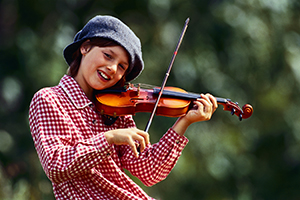
The arts transform a school environment into one of discovery and learning, improving comprehension and breaking down barriers between academic disciplines. Students have an opportunity to represent what they have learned by making art, which can promote greater retention of the academic subjects they are studying.
by Marilyn Eisenberg —
From those who are already considered successful and who require greater challenges, to those who would otherwise remain disconnected and perhaps not realize their full potential, the visual arts engage all students. These arts help students make new connections, think “outside of the box” and transcend previous limitations by learning to exercise their imaginations.
Strong motivators for obtaining self-discipline and social skills, the arts encourage self-directed learning. Each art form introduces special ways of perceiving the world, as well as mentally organizing and retrieving information, while utilizing critical thinking and problem-solving skills.
The arts transform a school environment into one of discovery and learning, improving comprehension and breaking down barriers between academic disciplines. Students have an opportunity to represent what they have learned by making art, which can promote greater retention of the academic subjects they are studying.
Art criticism helps students improve their analytical, evaluation, interpretation and observation skills, all of which can be transferred to other areas of study. Essential to an understanding of personal, local, national and global cultures, past and present, a strong arts program can further cultural literacy. The arts allow students to become lifelong learners by giving them skills beyond the basic “three Rs.”
Studies have shown that when young people participate in the arts at least three hours a day, for three days a week, for at least one year, they are:
- Four times more likely to obtain academic achievement.
- Three times more likely to be elected to a class office.
- Four times more likely to participate in a math or science fair.
- Three times more likely to have better attendance.
- Four times more likely to win an award for creative writing.
Young artists, as compared with their non-artist peers, attend art, dance and music classes nearly three times as frequently. They participate in youth groups almost four times as frequently, read for pleasure twice as often and are more likely to perform community service.
Arts education impacts every child’s developmental growth and has proven to help level the learning field across socioeconomic boundaries. Art-making has measurable influence on youth at risk; it has been proven to deter delinquent behavior and truancy problems, while increasing overall academic performance among those engaged in after-school and summer arts programs.
Marilyn Eisenberg, MFA, is director of public relations and marketing for The Sonoran Science Academy, 4837 E. McDowell Road, Phoenix, AZ 85009. 602-244-9855.
Reprinted from AzNetNews, Volume 24, Number 5, October/November 2005





September 12, 2013
Children and Teens, Creativity, Emotional Wellness and Well-being, Goals, Parenting, School related, Self-improvement